Table of Contents
Summary
» Country? Thailand.
» In a few words, what is the idea? If Buddha is not a God, What do the faithful do in temples? We show the steps to make offerings and explain the meaning of symbols.
» Duration? 20 minutes.
» For whom? Travellers who wish to participate in these Buddhist rituals, show their respects to Buddha or simply understand what they see in their visits to the temples.
» Where? Before or during a visit to a Buddhist temple.
» When? All year long.
Description
It is quite likely that on your trip to Thailand you will visit a few temples and then you will have the opportunity not only to watch many Buddhist worshipers but also to take part in the religious liturgy even if it is just a little while.
Thus, having an idea of what is happening, its meaning and how to do it is worth it to have a richer experience.
If Buddha is not a God, then... What do believers do in the temple?
It should be different from what a Christian or a Hindu does.
First of all, we must point out that all temples belong to the universe of the sacred and consequently everything that happens inside has symbolic value beyond the physical action or appearance.
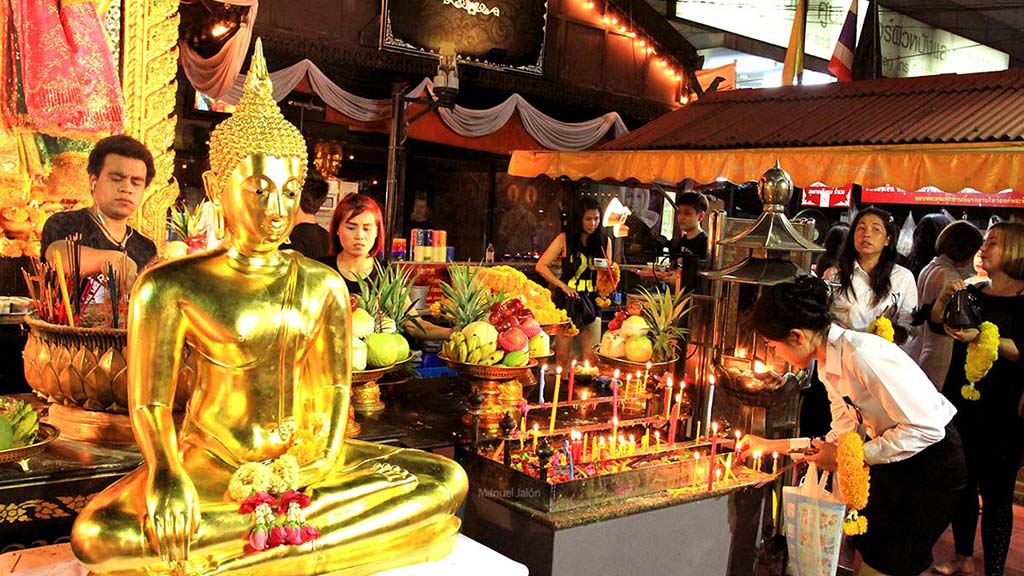
For example, if water washes away the dirt from the body, the same action within a sacred enclosure cleans the dirt from the soul, the personal karma of one who rinses his hands with this intention.

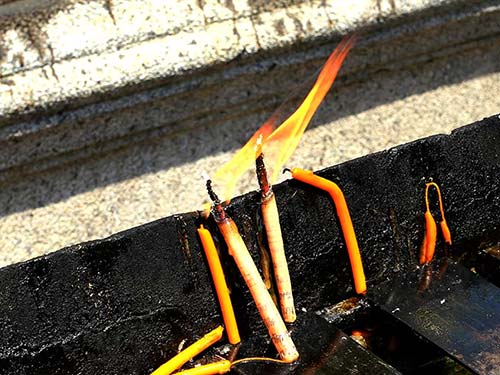
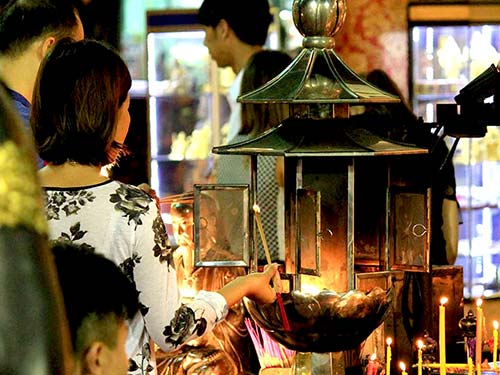
As we said before, Buddha isn’t a god. He is not venerated as a saint, but as the great sage, as the embodiment of Awakening.
For this reason, showing respect for Buddha will be a central act in the visit.
Also acts of purification and merit-making to create positive karma and to progress towards nirvana.
Finally, the faithful go to the temples in search of refuge, a quiet place where they feel protected and can meditate if they wish. There is a world outside not always friendly, dispersed and demanding.
The multi-level roof of the Buddhist temples evokes the overlapping feathers of the bird’s wings, under which the chicks feel calm and safe.
The meaning of the offerings
Before entering the hall, it is mandatory to take off the footwear and leave them outside to prevent introducing the impurities stuck to the soles and symbolically also those from the soul.
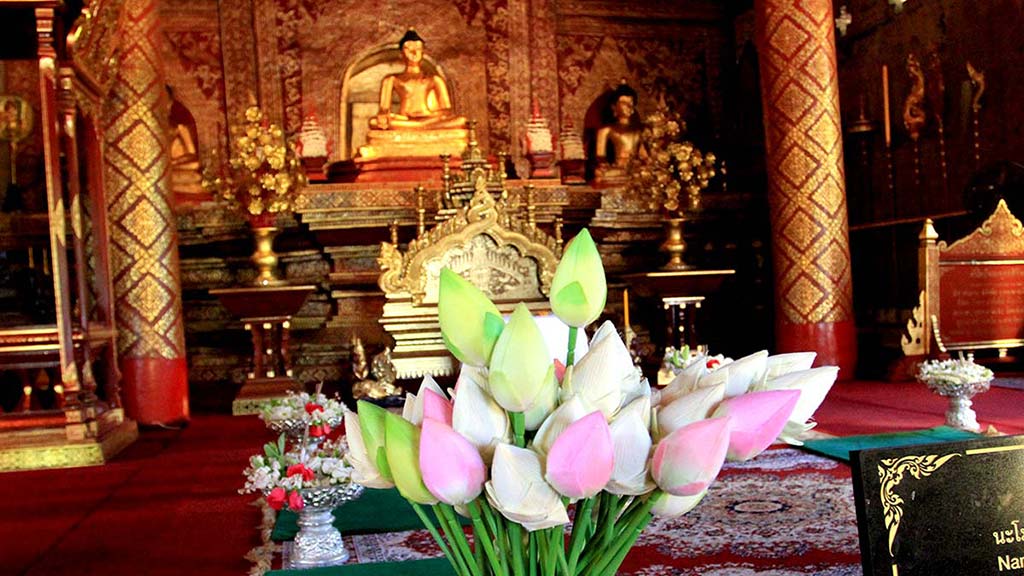
Offerings consist of flowers (lotus buds and garlands), incense and candles. Sometimes gold leaf is included to cover the surface of the statues as well as oils, fruits, etc.
» Flowers. They depict the impermanence since its beauty and fragrance have an ephemeral life. The lotus flower, in particular, is related to purity and awakening, when it opens its petals.

» Incense. Through its intense and penetrating scent, the fragrance evokes the beneficial and deep trace that a moral behaviour produces in our lives, according to the teachings of Buddha.
As for the smoke that comes out, it allows us to realise that all phenomena are a dream, that is, it makes evident the existence of the veils that prevent us from appreciating the true nature of our mind and the world.
» Candles. Light opposes darkness and disperses it. Light represents knowledge and wisdom in the face of ignorance hidden in evil deeds.
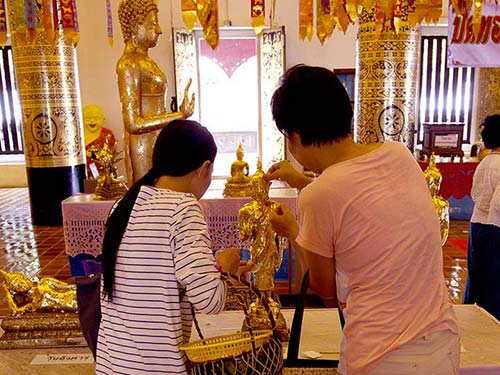

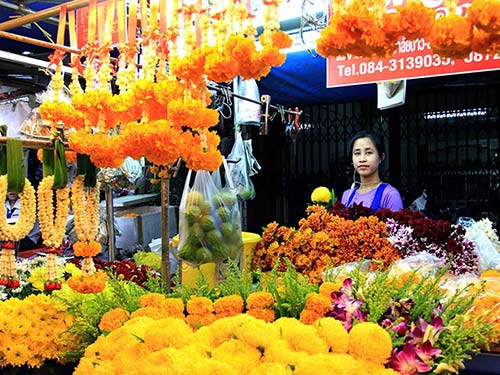
Steps in making offerings
1. Light the candles and place them in the right place. One is enough, but the typical thing is to do it with two.
2. Light the three bars of incense and place them on the tray before praying (you can pray with the incense sticks in your hands beside the flower, as long as the floor is not carpeted).

3. Pray with the flowers in the hands.
You can open your mind to Buddha as you would with Gandhi, Nelson Mandela or Teresa of Calcutta, so that you may be impregnated with his presence and receive his blessing. It’s just a personal suggestion.
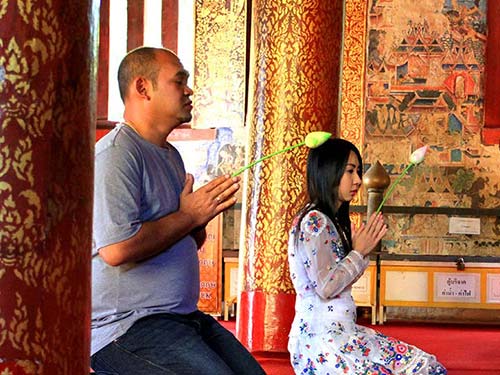


4. Place the flowers in the proper place, near the altar. On the carpet you have to go forward on your knees and then back away equally, without turning your back on the main Buddha.

5. Show respect to Buddha prostrating three times. To do so, kneel with your palms together in the position called ‘wai‘.
Raise them to your forehead and then lean forward placing your palms and forehead on the floor.
Repeat three times.
6. In case you have some gold leaf, stick it to the surface of the Buddha statue.
Remember that when you are sitting your toes should never point out to the central image of the Buddha.
Pay attention to the dress code required to visit the temples and avoid touching the monks.